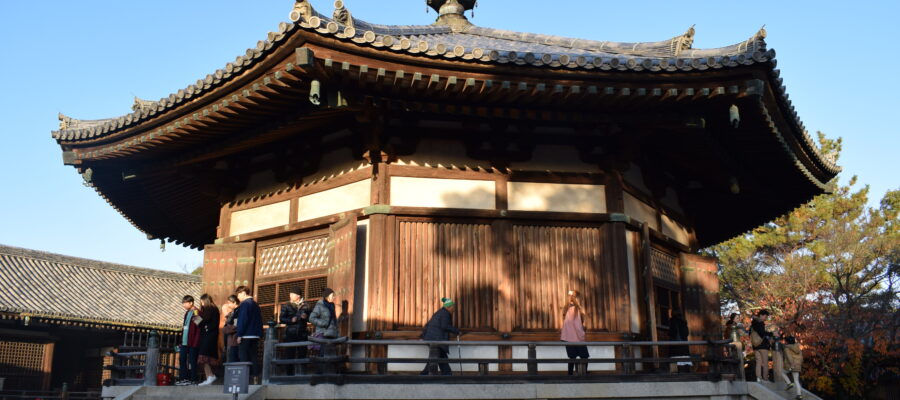廻廊を出て、少し池の方に行ってみます。歴史ある法隆寺ですから、多くの人々がここを訪れています。俳人の正岡子規もその一人でしょう。日本人なら誰でも知っている有名な俳句「柿くへば鐘が鳴るなり法隆寺」の句碑が建っています。子規の筆跡を象っているいるそうです。
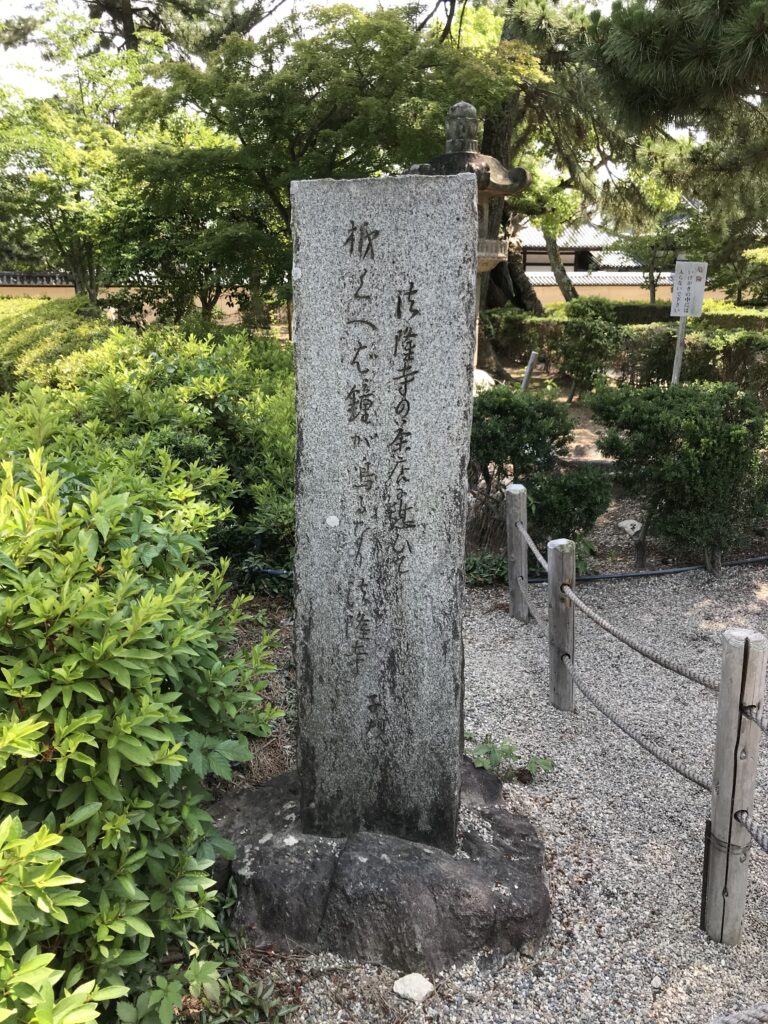
通常、西院伽藍を見学した後は、大宝蔵院に行き百済観音、玉虫厨子、夢違観音像など、日本史の教科書で必ず学ぶものを見て、次の場所に移動することが多いのですが、時々時間があるときは、東院伽藍まで行き夢殿を見学します。
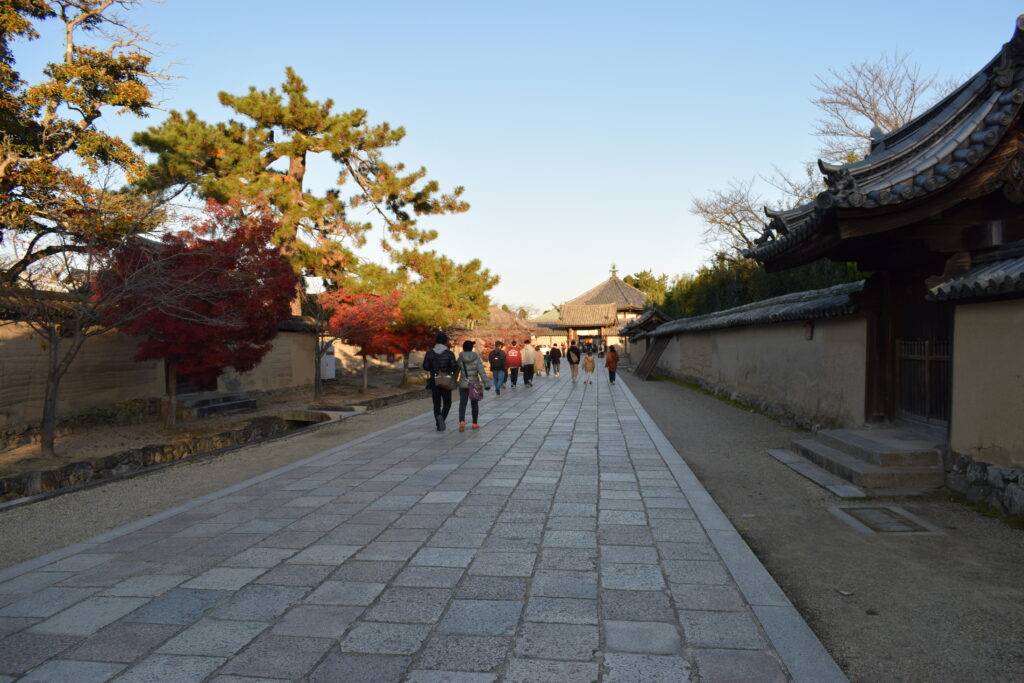
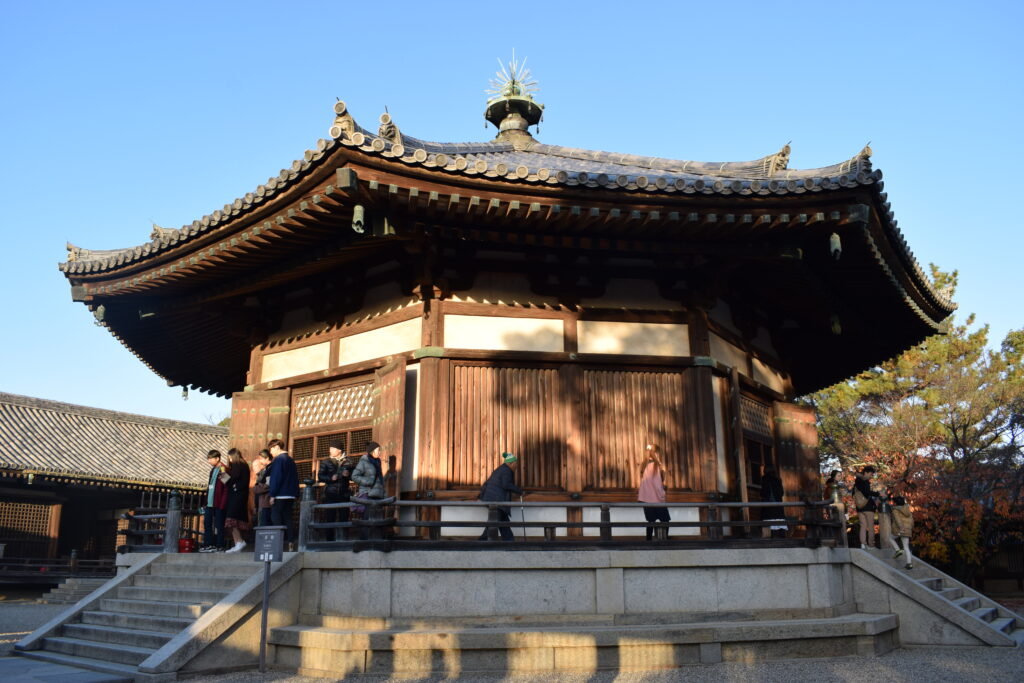
先日は、斑鳩町役場に所用で行った際に、法隆寺にも立ち寄り、めったに行かない西円堂にも行ってきました。平日の昼間だったので、私以外は誰もいませんでした。
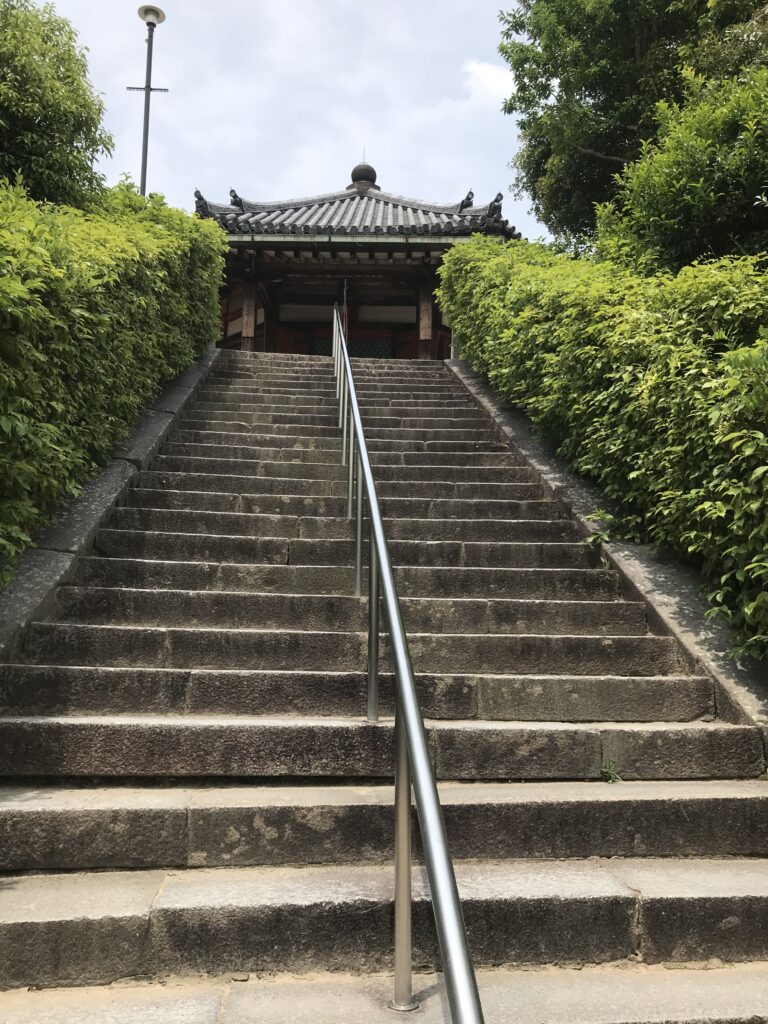
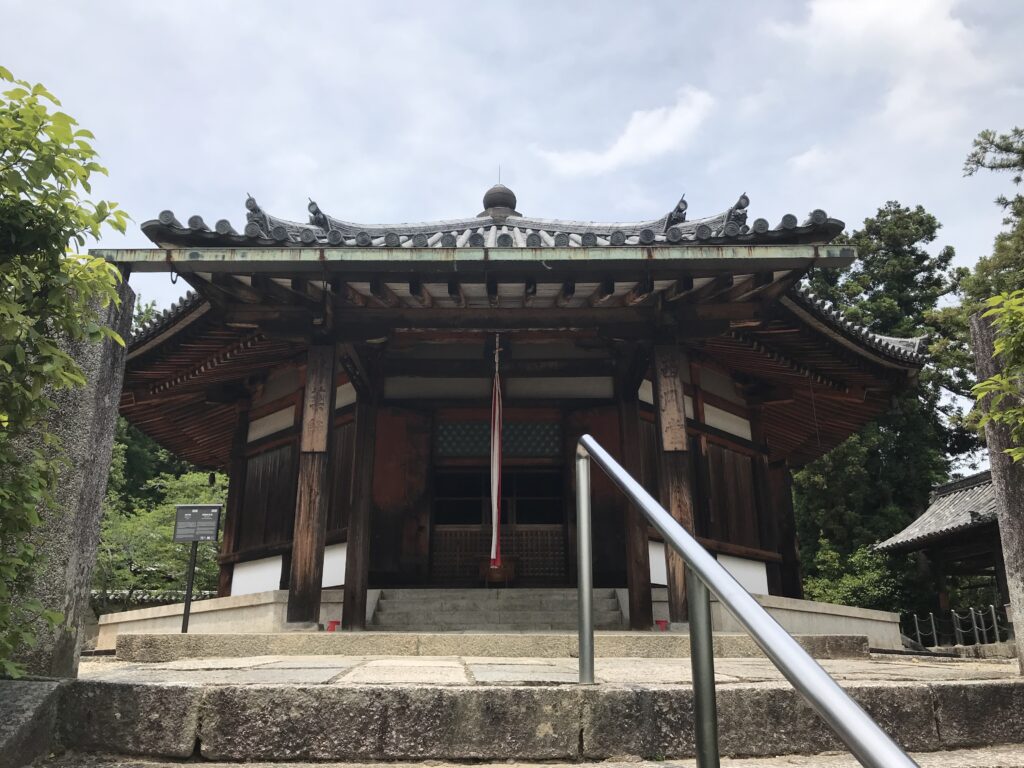
ところで、皆さんは法隆寺の7不思議で聞いたことがあるでしょうか。毎年、法隆寺が門徒らに発行する「法隆寺手帳」に書いてあるそうで、江戸時代ぐらいから伝えられてきたそうです。具体的には「①クモが巣をかけない」「②南大門の前に鯛石と呼ばれる大きな石がある」「③五重塔の相輪には鎌がささっている」「④不思議な伏蔵がある」「⑤カエルの片目がない」「⑥夢殿の礼盤(僧がすわる台)の下に水がたまる」「⑦雨だれが穴をあけるべき地面に穴があかない」というものです。
クモが巣をかけないと聞くと、探したくなるのが人情ですが、すぐにみつかりまいた。法隆寺さんごめんなさい。ある建物の軒下ですが、しっかりとクモの巣が張られています。
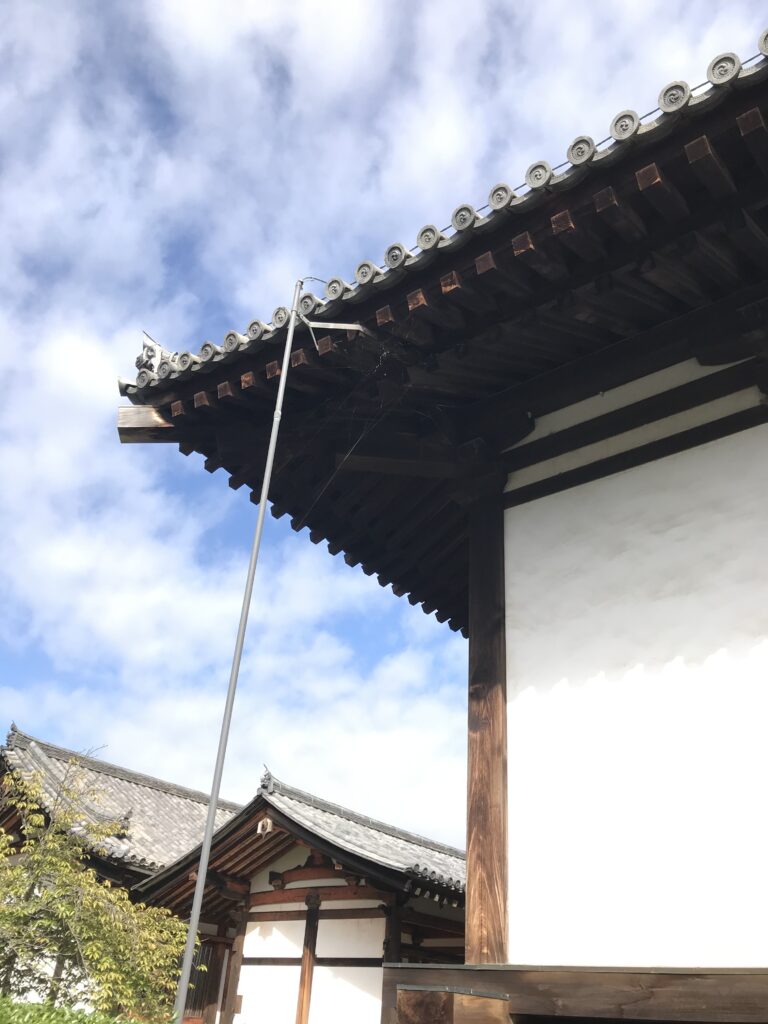
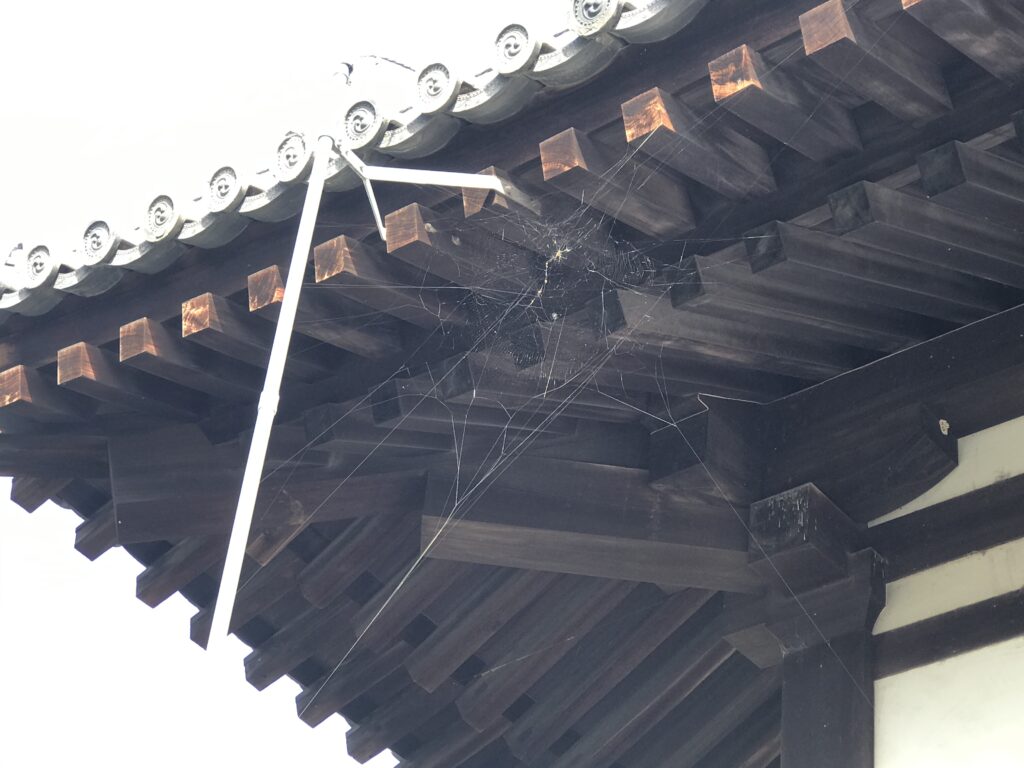
時々、神社でも「ハトが糞をしない」などを聞いたことがありますが、ハトの糞もありました。人間以外には神仏のありがたさは伝わりにくいようです。(完)
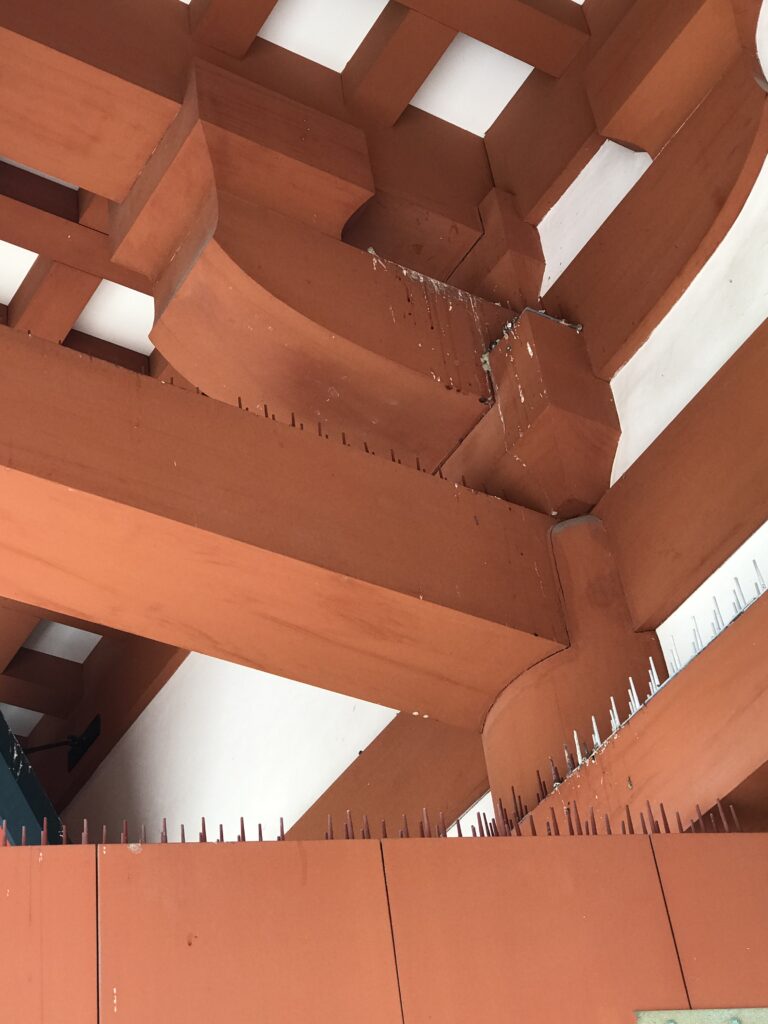
法隆寺の御朱印
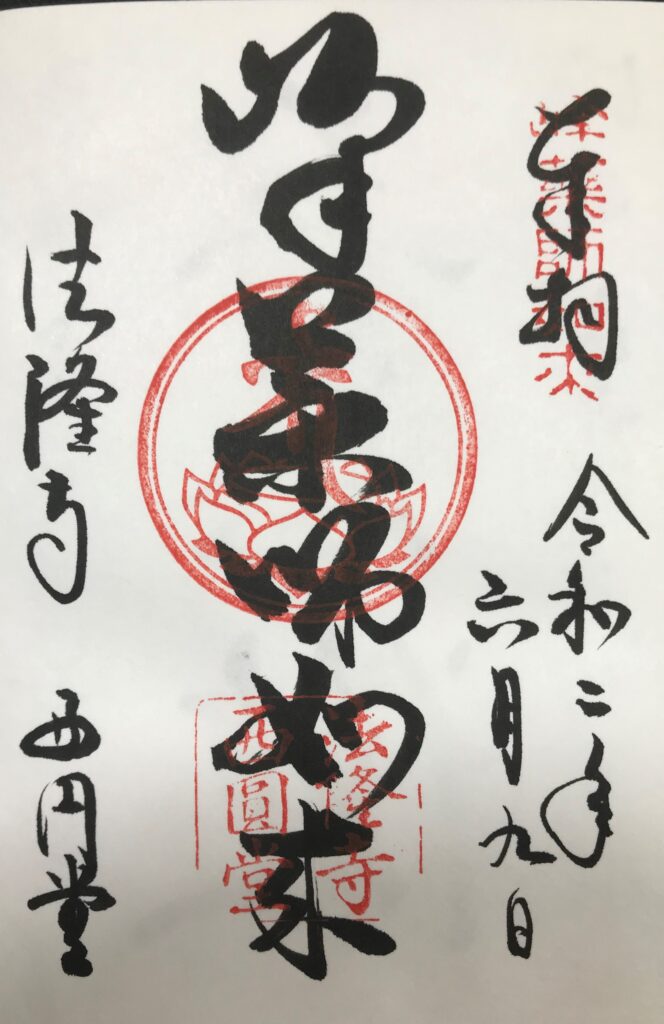
法隆寺が紹介されている書籍
神仏霊場会の公式ガイドブックに法隆寺が紹介されています。
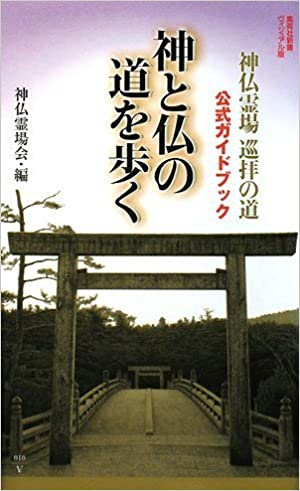
神と仏の道を歩く 神仏霊場巡拝の道公式ガイドブック (集英社新書ヴィジュアル版) [ 神仏霊場会 ]
価格:1,466円
(2021/5/6 09:24時点)
感想(5件)
Horyuji Temple (2) Seven Wonders
Leaving the corridor, let us go a little toward the pond. Since Horyu-ji Temple has a long history, many people have visited here. The haiku poet Masaoka Shiki is one of them. There stands a monument to his famous haiku, “Kaki kueba kane ga narunaru nar nari Horyu-ji,” which is well known to all Japanese. It is said to represent Shiki’s handwriting.
Usually, after visiting the Saiin (Western) Garan, I go to the Daihozoin (Treasury Hall) to see the Kudara Kannon, the Tamamushi Shrine, the Yumetagai Kannon statue, and other things I always learn about in my Japanese history textbooks before moving on to the next place, but sometimes when I have time, I go to the Toin (Eastern) Garan to see Yumedono Hall.
The other day, when I went to the Ikaruga Town Hall on business, I also stopped by Horyuji Temple and visited the Saiendo Hall, which I rarely go to. It was a weekday afternoon, so there was no one there but me.
By the way, have you ever heard of the 7 wonders of Horyuji Temple? They are written in the “Horyu-ji Handbook” issued by Horyu-ji every year, and have been handed down since around the Edo period (1603-1868). Specifically, there are: (1) spiders do not build webs, (2) there is a large stone called “tai-ishi” in front of Nandaimon, (3) a sickle is attached to the five-story pagoda, (4) there is a mysterious “Fusezo”, (5) frogs do not have one eye, (6) water accumulates under the reiban (platform where monks sit) in Muden, and (7) rain drops make no hole in the ground where they should make a hole.
When I heard that spiders do not make webs, it is human nature to want to look for them, but I soon found them. I am sorry, Mr. Horyuji. This is a spider’s web under the eaves of a building.
Sometimes I have heard that “pigeons don’t defecate” at shrines, but there were pigeon droppings as well. It seems that it is difficult for non-humans to appreciate the gods and Buddha. ( End )
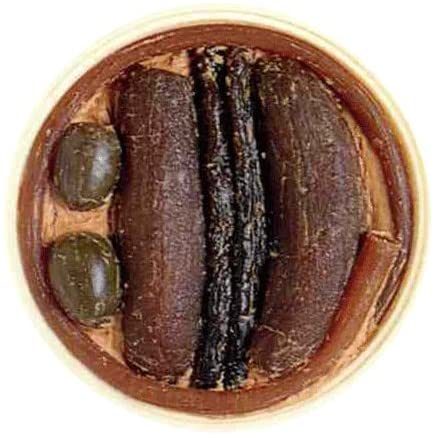
樽出し奈良漬け詰合せ N-80 (大森屋 漬物) お中元 お歳暮 ギフト
新品価格
¥8,640から
(2022/4/30 16:29時点)
Temple Horyuji (2) Sept Merveilles
En quittant le couloir, allons un peu vers l’étang. Comme le temple Horyu-ji a une longue histoire, de nombreuses personnes l’ont visité. Le poète de haïkus Masaoka Shiki est l’un d’entre eux. Il y a un monument à son célèbre haïku, “Kaki kueba kane ga narunaru nar nari Horyu-ji”, qui est bien connu de tous les Japonais. On dit qu’il représente l’écriture de Shiki.
Habituellement, après avoir visité le Saiin (Garan occidental), je vais au Daihozoin (salle du Trésor) pour voir le Kudara Kannon, le sanctuaire Tamamushi, la statue du Yumetagai Kannon et d’autres choses que j’ai toujours apprises dans mes manuels d’histoire du Japon avant de passer à l’endroit suivant, mais parfois, quand j’ai le temps, je vais au Toin (Garan oriental) pour voir le Yumedono Hall.
L’autre jour, lorsque je me suis rendu à l’hôtel de ville d’Ikaruga pour affaires, je me suis également arrêté au temple Horyuji et j’ai visité le Saiendo Hall, où je vais rarement. C’était un après-midi de semaine, et il n’y avait personne d’autre que moi.
Au fait, avez-vous déjà entendu parler des 7 merveilles du temple Horyuji ? Elles sont décrites dans le “Manuel du Horyu-ji” publié chaque année par le Horyu-ji, et ont été transmises depuis la période Edo (1603-1868). Plus précisément, il y a : (1) les araignées ne construisent pas de toiles, (2) il y a une grande pierre appelée “tai-ishi” devant Nandaimon, (3) une faucille est attachée à la pagode à cinq étages, (4) il y a un mystérieux “Fusezo”, (5) les grenouilles n’ont pas un seul œil, (6) l’eau s’accumule sous le reiban (plate-forme où les moines s’assoient) à Muden, et (7) les gouttes de pluie ne font pas de trou dans le sol là où elles devraient en faire un.
Lorsque j’ai entendu dire que les araignées ne faisaient pas de toiles, il est dans la nature humaine de vouloir les chercher, mais je les ai vite trouvées. Je suis désolé, M. Horyuji. C’est une toile d’araignée sous l’avant-toit d’un immeuble.
J’ai parfois entendu dire que “les pigeons ne défèquent pas” dans les sanctuaires, mais il y avait aussi des excréments de pigeon. Il semble qu’il soit difficile pour les non-humains d’apprécier les dieux et Bouddha. (Fin)
